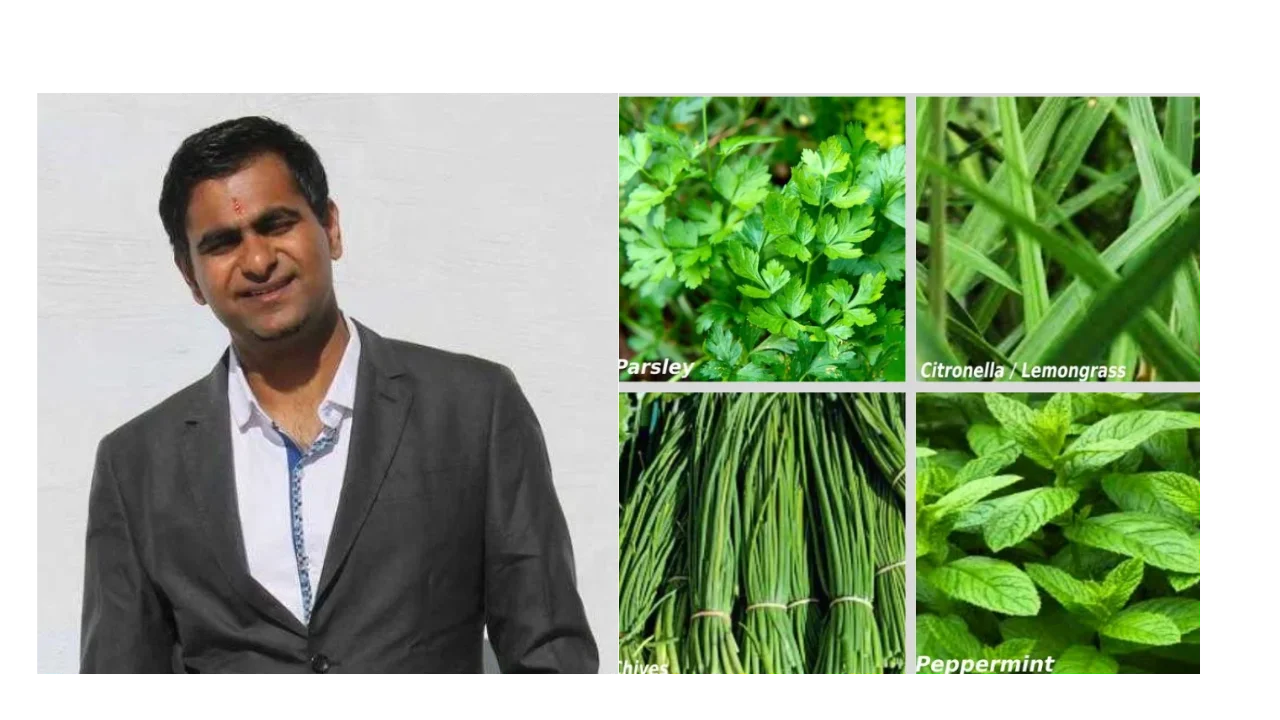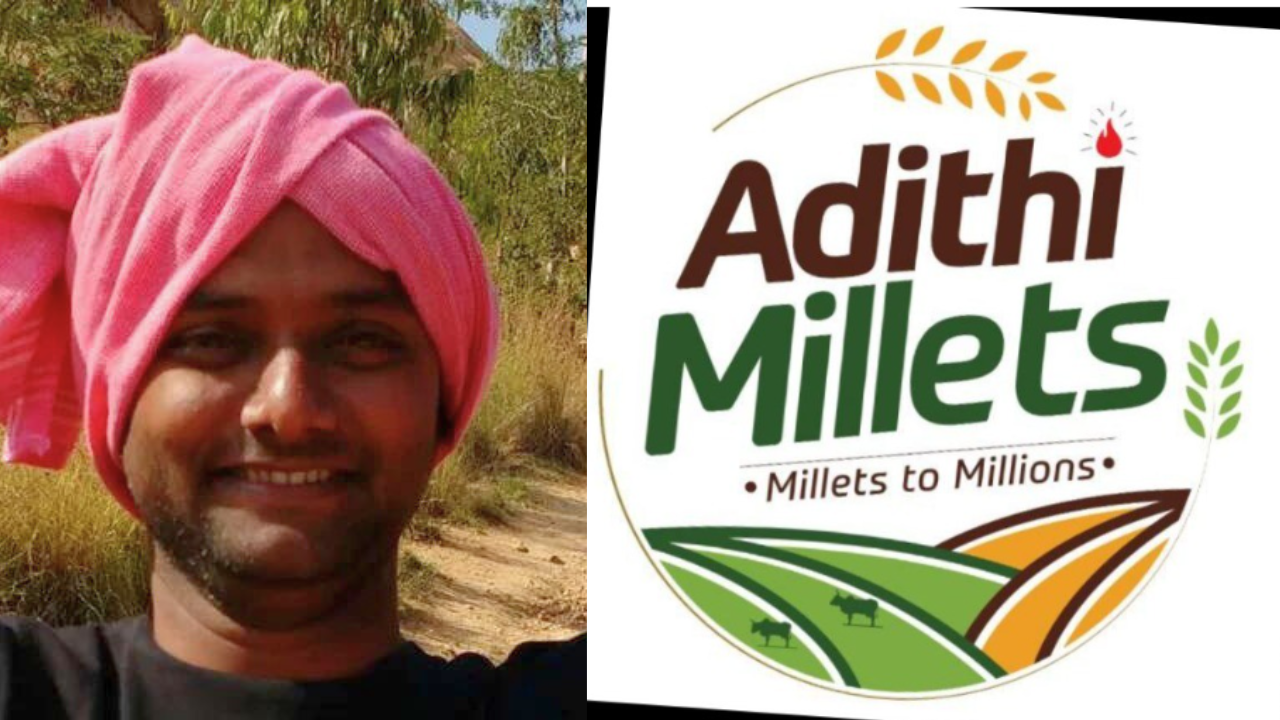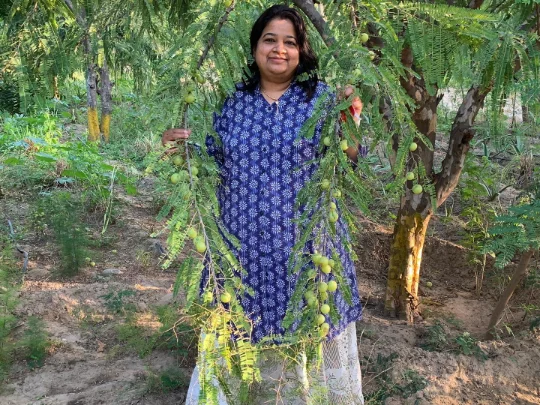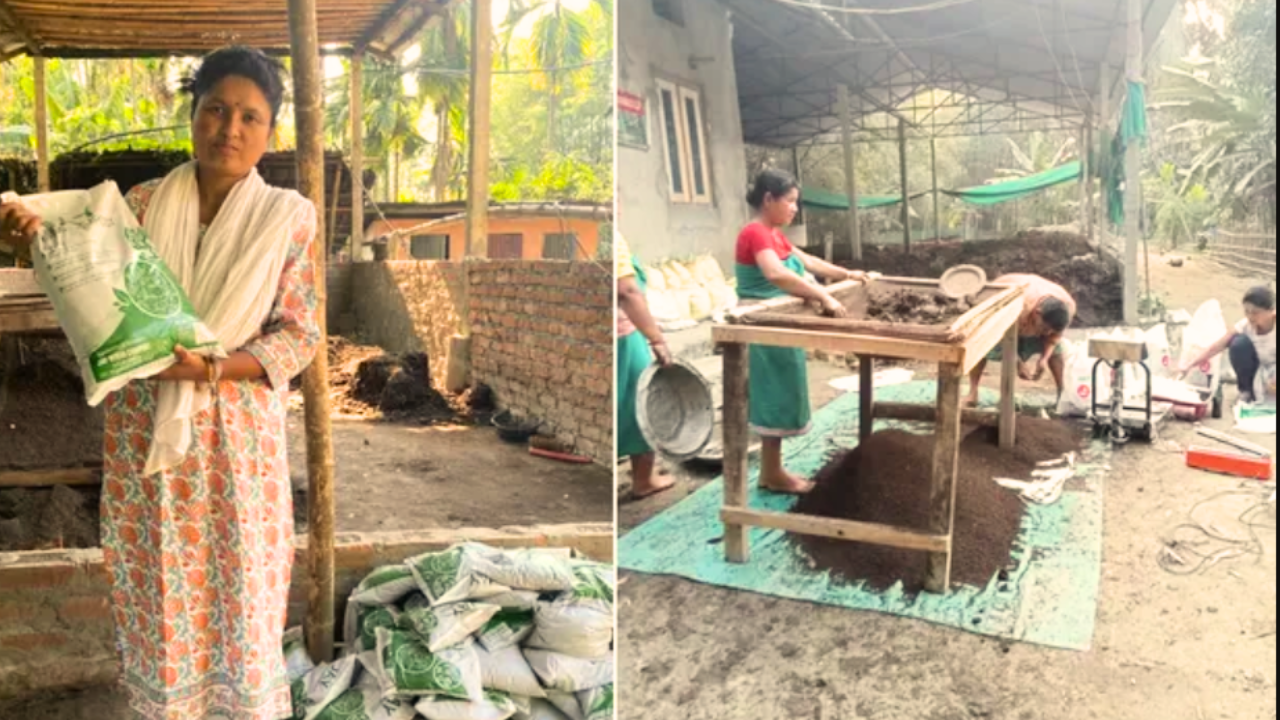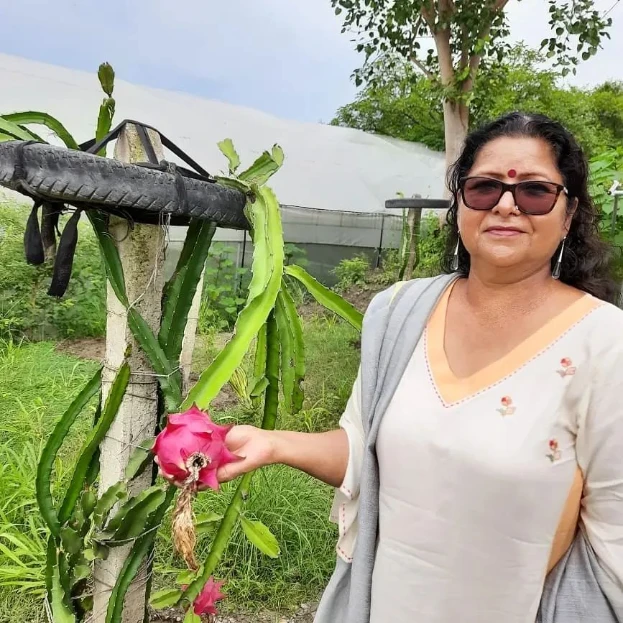Shashank Dubey used to have a comfortable job in a corporate office in Delhi. One day, he came across an article talking about vegetables being grown near the Yamuna river, and how they could be risky to eat due to pollution and heavy metals. This news bothered him.
He said, “These vegetables are cultivated in polluted areas and contain harmful heavy metals. Eating them can lead to serious illnesses, even cancer.”
Shashank, who is 33 years old, explained, “On top of that, people in cities rely a lot on packaged and fried foods, which are not good for health. The quality of our food matters. So, I decided to start growing my own vegetables.”
After working for almost ten years as an engineer in electronics and communications, Shashank decided to quit his job in 2018 and moved to Vadodara. He quickly started growing his own food. But, like many city dwellers, he faced a challenge with limited space.
Also Read: Compelled to Leave Studies and Embrace Farming, Now His Mixed Chilli Farming Yields Crores
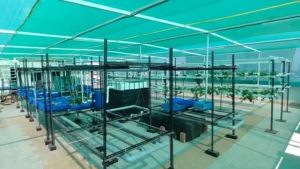
Instead of going for the traditional method of farming that requires lots of time and a big area of land, he chose to do aquaponics farming. This approach combines aquaculture (raising fish) with hydroponics (growing plants in water). In this way, fish help provide nutrients to the plants by releasing waste that enriches the water used for plant growth.
Nowadays, he successfully cultivates around 2,500 different types of plants. These include various green leafy vegetables, medicinal herbs, and even flowers.
Aquaponics vs Hydroponics
While Shashank was searching for different ways to farm that didn’t involve the usual methods, he came across hydroponics and aquaponics.
Let me explain the distinction between these two methods in simpler terms. In hydroponics, plants grow without using soil. Instead, their roots are placed in water, and this water is cycled through a system. Also, special liquid fertilizers are added to help the plants grow.
Now, aquaponics is a mix of hydroponics and aquaculture.
The main difference between hydroponics and aquaponics is how they provide nutrients to the plants. Aquaponics works a lot like hydroponics, but it has an extra fish tank where fish are raised. Bacteria in the system break down fish waste into nitrate, which is a great natural fertilizer for the plants. It’s like copying what happens in a river. This fish tank helps move water to smaller tanks where plants are grown.
Shashank, who’s been using old drums and cans as fish tanks, also adds things like iron nails, lime, and eggshells to provide extra iron and calcium for the plants.
One of the coolest things about this method is that it not only allows you to grow food without soil in a small space but also in an organic way. Plus, you don’t need to add fertilizer to each plant separately.
And here’s a neat fact: aquaponics farming uses 80 percent less water compared to regular farming. Shashank also points out that farmers can make extra money by selling the fish they raise for eating, along with the vegetables they grow.
Also Read: Teacher Ventures into Organic Farming Post Retirement Earning Lakhs cultivating coconut and pepper
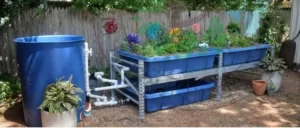
Distributing the Production of Food
After conducting six months of research and receiving guidance from ICAR-CAFRI in Vadodara, Shashank started growing vegetables using aquaponic farming methods. He did this indoors with artificial lighting in a 600 square foot area for three years. Later on, he transitioned to cultivating vegetables in a commercial terrace setup, which he started doing seven months ago.
Even though Shashank had no prior farming experience, he now manages to harvest around 500 kilograms of vegetables every month from his aquaponic terrace farm spanning 2,000 square feet. He has also taken on the role of teaching city dwellers who are interested in farming.
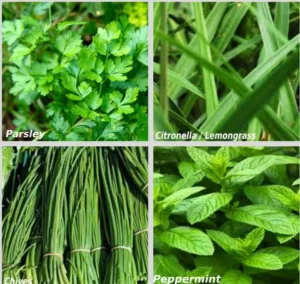
“I aimed to create this farm to prove that urban residents are capable of growing vegetables consistently. I support them for a year to help them grasp the system so they can confidently cultivate vegetables using aquaponics,” Shashank explains.
To date, he has trained 35 individuals from Gujarat and Rajasthan, offering both offline and online classes.
“The training is personalized. I conduct a six-hour session where I spend the initial three hours educating them about various plants suitable for aquaponic farming. The subsequent three hours are dedicated to teaching them how to set up the aquaponics system,” Shashank elaborates. He charges Rs 2,500 for offline classes and Rs 3,000 for online classes.
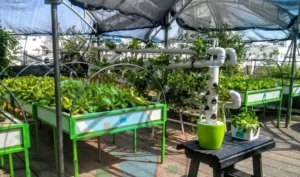
Shashank also provides some insights into aquaponics farming: “Different crops thrive in specific temperature ranges. For leafy vegetables, maintaining a temperature between 25 and 30 degrees Celsius is essential. However, for crops like strawberries, the temperature should be lowered to 18 degrees Celsius, and for lettuce, even down to 15 degrees Celsius. We utilize urban clay pots to regulate the water temperature within the system.”
He advises farmers to incorporate fish such as goldfish and koi fish. “These fish produce more waste and can endure challenging temperature conditions. It’s crucial to filter the water before introducing the fish to the tank, ensuring that the water isn’t too hard. Approximately 150 fish can be placed in a 1,000-liter tank. If you’re raising edible fish, a 3,000-liter tank is necessary due to their larger size,” Shashank suggests.
Shashank estimates that setting up an aquaponic terrace farm in a vertical arrangement costs around Rs 800 per square foot. However, this cost can be reduced to Rs 400 if vertical farming is avoided. He emphasizes that this is a one-time investment.
“While food production is a fundamental necessity, many urban residents are hesitant about the concept. My focus is not just on my own earnings, but on empowering urban Indians to cultivate their own vegetables, even in limited spaces as small as one square foot. Aquaponic farming has the potential to decentralize food production,” Shashank concludes.
You can contact Shashank here

